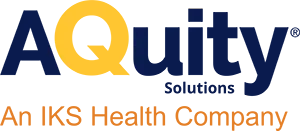Home Coding Hernia Procedures
Cracking the Code
Coding Hernia Procedures
- Published on
Hernia repairs (CPT code set 49491–49659) are performed because of a protrusion of internal organs through a weakening in the abdominal wall. Herniorrhaphies are repaired by the physician, who reduces bulging tissue back into the abdominal cavity and sutures the abdominal wall back into place. For proper code selection, you would need to know the type of hernia (inguinal, femoral, lumbar, omphalocele, anterior abdominal, or parastomal). For a few hernia types, you would also need to know the patient’s age, whether the hernia is initial or recurrent, and clinical status of the hernia (for example, reducible, incarcerated, strangulated, or recurrent). Remember, for anterior abdominal hernias, you would also need to know the total defect size.
Types of hernias include anterior abdominal hernias (49591-49623) which include epigastric hernias which is when protrusion occurs in the midline between the xiphoid process and the umbilicus. Incisional or ventral hernias which occur when protrusion occurs at the incisional site following abdominal surgery. Umbilical hernias which is protrusion that occur at the umbilicus because of an abnormally large or weak umbilical ring. A spigelian hernia, although uncommon, this type of hernia consists of protruding peritoneal fat, a peritoneal sac, or a viscous-containing sac through the spigelian zone. This zone is in the lower abdominal region on either the right or left side lateral to the rectus muscle. Inguinal Hernia repairs would be reported using CPT codes 49491-49525. These occur when the abdominal contents protrude into the inguinal canal. This type of hernia is the most common and the method of repair is determined by the age of the patient. Sliding inguinal hernias (CPT code 49525) are when the peritoneal organs (for example, ascending colon, bladder, or cecum) protrude in such a way that the wall of the internal organ forms a portion of the hernial sac. A lumbar hernia (CPT code 49540) is when the posterior abdominal wall or retroperitoneal outpouchings occur between the 12th rib and the iliac crest. A femoral hernia (CPT code range 49550-49557) is when the intestine protrudes along the femoral canals.
Modifiers LT/RT are common practice with coding hernia procedures and bilateral hernia repairs are reported with modifier 50 appended to the procedure code.
